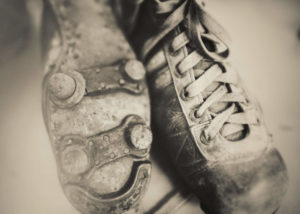
The Central zone is situated on the Country of the Darumbal, Byellee, Gureng Gureng, Taribelang, Iningai, Gayiri and Gangulu peoples. The zone stretches from Yipun (Yeppoon) down to Gladstone and inland to Longreach.
Women started playing football in Central Queensland in the 1940s
The earliest evidence of a women’s game we can find in Rockhampton is a match played in aid of the Rockhampton Ambulance at Lakes Creek Ground in October 1947 between a ladies team and a minor boy’s team. A week or so after the match between the minor boys team and ladies team, another reportedly exciting match took place at a Nerimbera Soccer Club picnic. Over 200 people attended and this time the match was between two ladies teams.
In the 1950s, the Rockhampton Ladies and the Mount Morgan Ladies played soccer in aid of the Rockhampton Ambulance. During this time the Central Queensland British Football Association awarded the Rockhampton ladies team nylon stockings for their victories over Mt Morgan (shields and cups were awarded to the men’s teams).
Women’s soccer in Rockhampton appears to have kicked off again around 1970s. In 1974 Kaylene Webb, Jennifer Fraser, Pam Reynolds and Leonie Wovat asked Mr Doug McQuire to teach them how to play soccer. After this, they formed a team at Nerimbera Soccer Club and encouraged the All Blacks Sports Club to form a women’s team as well.
One of the first records we can find of the women’s game in Gladstone is an article in the Gladstone Observer on March 7th, 1986. It documents Wolves player, Leysha Penfold’s struggle to play in the local men’s competition.
During the 1990s, Bernice Reynolds (37) and her daughter Angela Warwick (16) both represented Rockhampton at the Women’s Soccer State Titles in Cairns. It appears they are the only mother and daughter to represent Rockhampton at the same time.
Current clubs which field women’s teams are: Nerimbera, Bluebirds UFC, Central, Meteors, Clinton, BITS Sharks, Gladstone United, Valleys, Gracemere Redbacks, Capricorn Coast and Frenchville.
Read a more in depth history of the region below.



We acknowledge the Traditional Custodians of the land on which the events presented in this digital history occurred and acknowledge that sovereignty was never ceded. We recognise Aboriginal and Torres Strait Islander peoples and their continuing connection to land and waterways as well as their rich history of sports and significant continuing contribution to football.